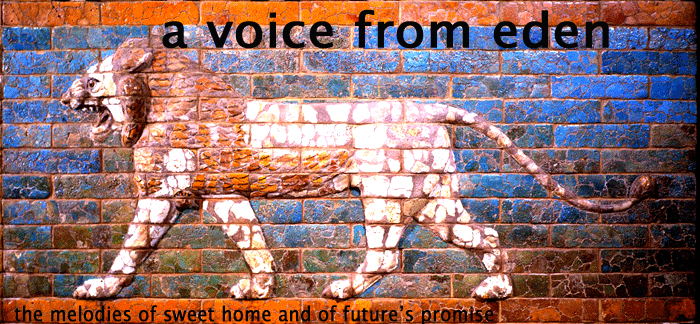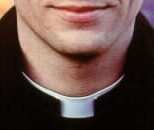reflection on today's lectionary readings: calling to new life
Based on Ephesians 4:1-7, 11-13
Matthew 9:9-13
The great 16th century Italian artist Caravaggio used this Gospel story as a subject of one of his paintings called The Calling of Matthew. That great painting is just full of imagery and symbolism and message.
On the right corner of the painting is the figure of Jesus standing, with the light falling from Jesus right on to Matthew. And Jesus is painted with his arm extended, pointing at Matthew, who is seated, surrounded by his companions. And Matthew with a startled look, points a finger to himself as if to say, “Me?” The body of Jesus who is shown standing is actually obscured: we can only see his head and his outstretched arm. His body is blocked by the figure of Peter, who is standing next to him.
Caravaggio conveys several ideas in his painting. He paints in this way to convey the idea that God calls and speaks in and through all things, all times, and all places, especially in our everyday lives, even in the moments when we are in sin, just as Jesus calls to Matthew while he was in the midst of sin, of collaborating with the enemy, the Romans.
And Jesus continues to call us, as he called Matthew, to conversion, not just a superficial kind of change. But rather conversion is being a new creation, a new person. In the painting, Jesus points to Matthew calling him, calling him to conversion, and Caravaggio deliberately painted Jesus’ hand to look like the hand of God from the painting by Michelangelo called the Creation of Adam in the ceiling of the Sistine Chapel. The call of Jesus, the call of God, is the call to be a new creation, a new person, changed profoundly, renewed, reinvigorated: no longer clinging to old attitudes and resentments. And Jesus calls us to a kind of resurrection, spiritual resurrection. When Jesus calls Matthew, Matthew gets up, he rises. Rising up, the standing posture, has always been a symbol for resurrection.
So Jesus, God, calls, summons in and through all things, all times, and all places, but most definitely through the Church, through the ministry of the Church. Jesus calls through the sacraments, the liturgy, the teachings of the Body of Christ, the Church. And Caravaggio, the Catholic he was, paints this. Just as Jesus’ body was obscured in the painting by the figure of Peter (a symbol for the Church), so the Church stands in the place of Jesus, calling people together, gathering them.....
Gathering them to places like this, and to occasions like this, to a banquet, a feast. The first thing that Jesus does after calling Matthew, is to have a party. They gather together for a party, a meal. That has always been the way of Jesus. Jesus continues to call us to gather and listen to him, the Liturgy of the Word, and to commune with him around the Table of the Eucharist, and to receive his body and his blood.
There is one final detail about this painting. Caravaggio included himself in the painting. He showed himself to Matthew’s right, with his arm over Matthew’s shoulder, as a friend. He also looks at Jesus, and the light that came from Jesus, which falls on Matthew also falls on Caravaggio, as if to indicate that the calling of Matthew is also a calling to him, Caravaggio, a sinner, a "tax collector." Here is a message for us: to include ourselves in this story, in this painting, and to remember that the calling of Matthew is also a calling to us, to continue to rise up to new life, and to enter into God’s banquet.
Caravaggio's The Calling of St. Matthew.
Matthew 9:9-13
The great 16th century Italian artist Caravaggio used this Gospel story as a subject of one of his paintings called The Calling of Matthew. That great painting is just full of imagery and symbolism and message.
On the right corner of the painting is the figure of Jesus standing, with the light falling from Jesus right on to Matthew. And Jesus is painted with his arm extended, pointing at Matthew, who is seated, surrounded by his companions. And Matthew with a startled look, points a finger to himself as if to say, “Me?” The body of Jesus who is shown standing is actually obscured: we can only see his head and his outstretched arm. His body is blocked by the figure of Peter, who is standing next to him.
Caravaggio conveys several ideas in his painting. He paints in this way to convey the idea that God calls and speaks in and through all things, all times, and all places, especially in our everyday lives, even in the moments when we are in sin, just as Jesus calls to Matthew while he was in the midst of sin, of collaborating with the enemy, the Romans.
And Jesus continues to call us, as he called Matthew, to conversion, not just a superficial kind of change. But rather conversion is being a new creation, a new person. In the painting, Jesus points to Matthew calling him, calling him to conversion, and Caravaggio deliberately painted Jesus’ hand to look like the hand of God from the painting by Michelangelo called the Creation of Adam in the ceiling of the Sistine Chapel. The call of Jesus, the call of God, is the call to be a new creation, a new person, changed profoundly, renewed, reinvigorated: no longer clinging to old attitudes and resentments. And Jesus calls us to a kind of resurrection, spiritual resurrection. When Jesus calls Matthew, Matthew gets up, he rises. Rising up, the standing posture, has always been a symbol for resurrection.
So Jesus, God, calls, summons in and through all things, all times, and all places, but most definitely through the Church, through the ministry of the Church. Jesus calls through the sacraments, the liturgy, the teachings of the Body of Christ, the Church. And Caravaggio, the Catholic he was, paints this. Just as Jesus’ body was obscured in the painting by the figure of Peter (a symbol for the Church), so the Church stands in the place of Jesus, calling people together, gathering them.....
Gathering them to places like this, and to occasions like this, to a banquet, a feast. The first thing that Jesus does after calling Matthew, is to have a party. They gather together for a party, a meal. That has always been the way of Jesus. Jesus continues to call us to gather and listen to him, the Liturgy of the Word, and to commune with him around the Table of the Eucharist, and to receive his body and his blood.
There is one final detail about this painting. Caravaggio included himself in the painting. He showed himself to Matthew’s right, with his arm over Matthew’s shoulder, as a friend. He also looks at Jesus, and the light that came from Jesus, which falls on Matthew also falls on Caravaggio, as if to indicate that the calling of Matthew is also a calling to him, Caravaggio, a sinner, a "tax collector." Here is a message for us: to include ourselves in this story, in this painting, and to remember that the calling of Matthew is also a calling to us, to continue to rise up to new life, and to enter into God’s banquet.
Caravaggio's The Calling of St. Matthew.




<< Home